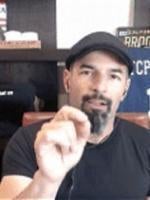I hadn’t planned to blog again today but when I started reading Med. & Chiropractic Clinic, Inc. v. Oppenheim, No. 18-13714, 2020 U.S. App. LEXIS 37439 (11th Cir. December 1, 2020) I had to move some things around.
In the case the Eleventh Circuit Court of Appeals considered a spat between two class action law firms, and it is just a remarkable tale and there is so much to learn from it here.
The fight started when a big shot partner at one of the firms left to join another firm (this never goes well–trust me.) Deciding to make the transition even harder than it needed to be, big shot decided to encourage new firm to settle a series of class actions involving faxes sent by the NFL’s Buccaneers franchise—don’t get me started on the faxball angle here— that his old firm had been pursuing, only for a lower price than his former firm had been willing to deal for.
That upset members of yet another firm that also had class action lawsuits pending against the Buccaneers for sending the faxes. The third firm—allegedly with funding from first firm—sued the big shot and the second firm for allegedly using confidential information obtained while big shot was at the first firm to help the second firm score the big settlement.
The Eleventh Circuit ultimately agreed that big shot did nothing wrong and second firm’s settlement was just fine–although the settlement itself ended up getting blown up anyway.
But that, somehow, is the boring part.
The fascinating part is all the gossip and secret stuff the decision unveils.
For instance, how often do you get a chance to peek inside high-stakes negotiations in a class action mediation? Well, I mean, I get to do it all the time. But how often do you get to?
Check out this paragraph:
[First firm partner] wanted a larger settlement than the Buccaneers were willing to pay. [First firm partner] refused to settle for less than a $99,000,000 “settlement fund” and a $24,750,000 attorney fee (25% of the settlement fund). When talks stalled, [Mediator] suggested the parties negotiate the fund in a bracket between $10,000,000 and $50,000,000. [Firm firm partner] was less than enthusiastic and responded, “I am NOT going down to $50 million on this case.”
Not going “down” to $50MM. On a fax case. Against a storied and beloved Tampa Bay sports franchise. (Hey, I have an uncle who is a huge Bucs fan. “They’re big on defense” he still tells me with sincerity.)
Later in the decision former partner and his new pals at second law firm explain that this is all about ego. In his words:
“Yeah. [first firm partner] wants to set a record above the Capital One $75 million settlement. The magistrate judge it’s in front of is squeamish and is giving the Defendants a broad shot at disproving [vicarious liability].”
Later, they comment: “[Buccaneers’ counsel] is a settler” suggesting that they have a “mark” in defense counsel and are hankering to exploit his/her tendencies.
So new firm and big shot partner think they have an easy mark of a defense lawyer and a good case with a former law firm that is just trying to hang a pelt on the wall with the biggest TCPA settlement in history. That’s a great recipe to step in and settle out from under the former firm right? (Pigs fat, hogs slaughtered, and all that).
Only one problem—they don’t have a client.
No problem, actually. New firm launches a direct mail campaign to find folks interested in bringing class action lawsuits. They then cross reference phone numbers from individuals expressing interest in easy money (my characterization, not the court’s) against the list of phone numbers filed by expert Robert Biggerstaff in furtherance of certification of the earlier suit to find class members to bring a new suit.
Pause.
Read that sentence again.
The new law firm used the list of class member phone numbers filed with the expert report lodged by the first law firm to seek certification and used it to find class members to sue in a second suit.
This is why you must always oppose the production of data before class certification folks. I mean, along with all of the other reasons. If you don’t get what I’m saying call me and we can talk it through.
So then things get even better. First law firm finds out that second law firm has found a new plaintiff and filed a competing suit (in state court mind you) and goes ballistic making filings in both state and federal court designed to prevent the new suit from going forward.
Second law firm responds to these machination sin the best possible way—it dismisses its suit, but goes ahead and secretly mediates the case on a classwide basis with the Buccaneers anyway.
That’s just too good.
As you’d guess, second law firm undercuts the “I want biggest settlement in history” guy and with a deal reached, returns from the dead and re-files their dismissed case– immediately seeking preliminary approval of the secret settlement they had negotiated behind first law firm’s back.
In the meantime, third firm—you’ll recall this was a different firm that had also been suing the Buccaneers—decides to file a suit against big shot partner and second firm with first firm paying for the litigation. Apparently first firm was pissed that big shot had stolen the case and ponied up $500,000.00 to pursue litigation against the former partner.
Face, meet cut off nose.
Meanwhile, first and third law firm successfully intervened in the settlement second law firm had reached with the Buccaneers and managed to blow up the settlement after all. Essentially making the whole lawsuit against second firm and big shot partner meaningless. But the case proceeded to the Eleventh Circuit Court of Appeals anyway…
So, if you’re keeping score at home, we have now three plaintiff’s law firms fighting each other to the circuit court of appeals over a settlement that no longer exists. Unreal.
The Buccaneers, in the meantime, presumably cannot believe their luck—they went from a $50-100MM potential liability, to a smaller dollar settlement, to no settlement at all as all the class counsel sit around fighting with each other instead of pursuing their case. Yep, luckiest NFL franchise ever.
Getting back to the actual ruling of Oppenheim, the Eleventh Circuit essentially determines that big shot partner did nothing wrong because he owed duties to the class as a whole and not just to the named class representative or his former law firm. Stating it a little different, partner didn’t “steal a case” because he continued fighting for the class and does not owe any special duties to his prior law firm or the specific named class representative he represented before.
You can only imagine how upset first law firm must be after all of this– not only did big shot partner “get away” with stealing first law firm’s case, all that money spent pursuing the action ($500k) has seemingly gone to waste–and he didn’t get his “I have the biggest TCPA settlement ever” bragging rights.
Then again, first firm appears to have succeeded in a “if I can’t have you no one can” destruction of the Buccaneer’s settlement plans, so maybe the underlying litigation will continue anew.
All I know is that TCPAWorld remains the most fascinating place on Legal Earth from my perspective. Thanks for being along for the ride.




 />i
/>i

